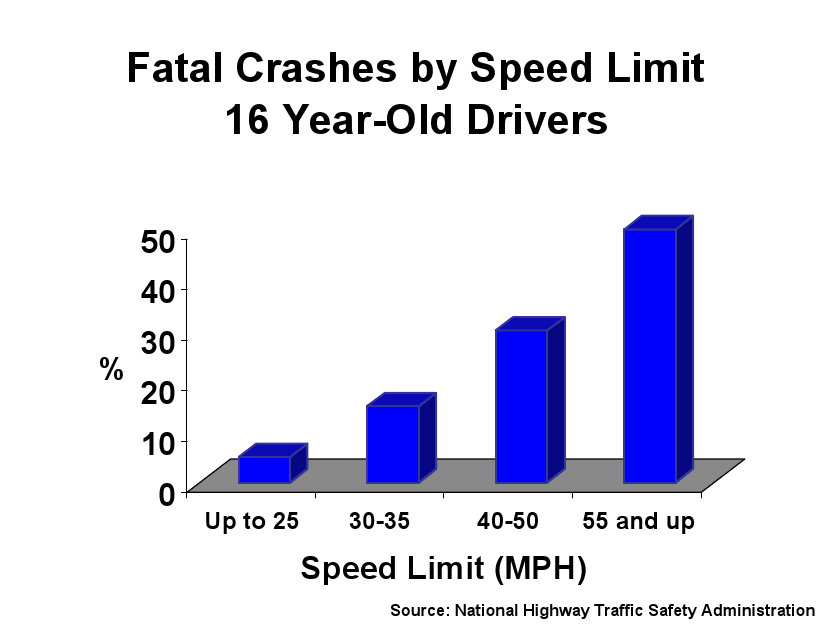High Speeds and High Speed Roads
High-speed crashes have higher crash forces that are more likely to result in severe injuries.
Watch this video (2:50) to learn more about high speeds and high-speed roads, and how exposing your teen to these types of driving conditions increases the risk of crash.
High Speeds and High Speed Roads
As speed increases, vehicles respond more quickly to steering and more slowly to braking. Inexperienced drivers may make abrupt changes, which can make the vehicle go out of control. It takes time to learn how to handle a vehicle at high speeds. High-speed crashes have higher crash forces and are more likely to result in severe injuries.

Recommendation
Limit your teen’s unsupervised driving to familiar, lower-speed roads for the initial months of licensure, and gradually allow unsupervised driving on higher-speed roads as your teen gains more experience.
Driving Experience
Inexperience is the single most important risk factor for teen crashes. Teens show the greatest improvement in safety within the first year and several thousand miles of independent driving – but keep improving for years.
Recommendation
Limit your teen’s driving under high speeds and on high-speed roads until your teen has a great deal of independent driving experience under familiar, lower-speed roads.
